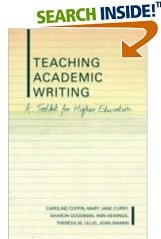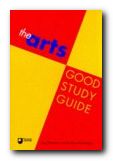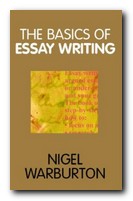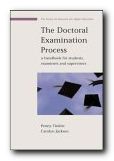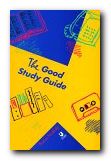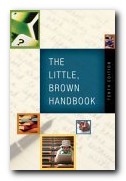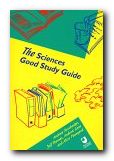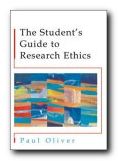sample from HTML program and PDF book
1. In preparation for writing an essay, you should be taking notes from a number of different sources: course materials, set texts, secondary reading, or tutorials and lectures. You might gather information from radio or television broadcasts, or from experiments and research projects. The notes could also include your own ideas, generated as part of the essay planning process.
2. The notes you gather in preparation for writing the essay will normally provide the detailed evidence to back up your arguments. They might also include such things as the quotations and page references you plan to use in your essay. Your ultimate objective in planning will be to produce a one or two page outline of the topics you intend to cover.
3. Be prepared for the fact that you might take many more notes than you will ever use. This is perfectly normal. At the note-taking stage you might not be sure exactly what evidence you will need. In addition, the information-gathering stage should also be one of digesting and refining your ideas.
4. Don’t feel disappointed if you only use a quarter or even a tenth of your materials. The proportion you finally use might vary from one subject to another, as well as depending on your own particular writing strategy. Just because some material is not used, don’t imagine that your efforts have been wasted.
5. When taking notes from any source, keep in mind that you are attempting to make a compressed and accurate record of information, other people’s opinions, and possibly your own observations on the subject in question.
6. Your objective whilst taking the notes is to distinguish the more important from the less important points being made. Record the main issues, not the details. You might write down a few words of the original if you think they may be used in a quotation. Keep these extracts as short as possible unless you will be discussing a longer passage in some detail.
7. Don’t try to write down every word of a lecture – or copy out long extracts from books. One of the important features of note-taking is that you are making a digest of the originals, and translating the information into your own words.
8. Some students take so many notes that they don’t know which to use when it’s time to write the essay. They feel that they are drowning in a sea of information.
9. This problem is usually caused by two common weaknesses in note-taking technique:
- transcribing too much of the original
- being unselective in the choice of topics
10. There are two possible solutions to this problem:
- Select only those few words of the source material which will be of use. Avoid being descriptive. Think more, and write less. Be rigorously selective.
- Keep the essay question or topic more clearly in mind. Take notes only on those issues which are directly relevant to the subject in question.
11. Even though the notes you take are only for your own use, they will be more effective if they are recorded clearly and neatly. Good layout of the notes will help you to recall and assess the material more readily. If in doubt use the following general guidelines.
Taking Notes – GUIDELINES
- Before you even start, make a note of your source(s). If this is a book, an article, or a journal, write the following information at the head of your notes: Author, title, publisher, publication date, edition of book.
- Use loose-leaf A4 paper. This is now the international standard for almost all educational printed matter. Don’t use small notepads. You will find it easier to keep track of your notes if they fit easily alongside your other study materials.
- Write clearly and leave a space between each note. Don’t try to cram as much as possible onto one page. Keeping the items separate will make them easier to recall. The act of laying out information in this way will cause you to assess the importance of each detail.
- Use some system of tabulation (as I am doing in these notes). This will help to keep the items separate from each other. Even if the progression of numbers doesn’t mean a great deal, it will help you to keep the items distinct.
- Don’t attempt to write continuous prose. Notes should be abbreviated and compressed. Full grammatical sentences are not necessary. Use abbreviations, initials, and shortened forms of commonly used terms.
- Don’t string the points together continuously, one after the other on the page. You will find it very difficult to untangle these items from each other after some time has passed.
- Devise a logical and a memorable layout. Use lettering, numbering, and indentation for sections and for sub-sections. Use headings and sub-headings. Good layout will help you to absorb and recall information. Some people use coloured inks and highlighters to assist this process of identification.
- Use a new page for each set of notes. This will help you to store and identify them later. Keep topics separate, and have them clearly titled and labelled to facilitate easy recall.
- Write on one side of the page only. Number these pages. Leave the blank sides free for possible future additions, and for any details which may be needed later.
Sample notes
What follows is an example of notes taken whilst listening to an Open University radio broadcast – a half hour lecture by the philosopher and cultural historian, Isaiah Berlin. It was entitled Tolstoy’s Views on Art and Morality, which was part of the third level course in literary studies ‘A 312 – The Nineteenth Century Novel and its Legacy.
Isaiah Berlin – ‘Tolstoy on Art and Morality’ 03 Sep 1989
1. T’s views on A extreme – but he asks important questns which disturb society
2. 1840s Univ of Kazan debate on purpose of A
T believes there should be simple answers to probs of life
3. Met simple & spontaneous people & soldiers in Caucasus
Crimean Sketches admired by Turgenev & Muscovites but T didn’t fit in milieu
4. Westernizers Vs Slavophiles – T agreed with Ws – but rejects science (Ss romantic conservatives)
5. 2 views of A in mid 19C – A for art’s sake/ A for society’s sake
6. Pierre (W&P) and Levin (AK) as egs of ‘searchers for truth’
7. Natural life (even drunken violence) better than intellectual
8. T’s contradiction – to be artist or moralist
9. T’s 4 criteria for work of art
- know what you want to say – lucidly and clearly
- subject matter must be of essential interest
- artist must live or imagine concretely his material
- A must know the moral centre of situation
10. T crit of other writers
Shkspre and Goethe – too complex
St Julien (Flaubert) inauthentic
Turgenev and Chekhov guilty of triviality
11. What is Art? Emotion recollected and transmitted to others
[Wordsworth] Not self-expression – Only good should be transmitted
12. But his own tastes were for high art – Chopin, Beethoven, & Mozart
T Argues he himself corrupted
13. Tried to distinguish between his own art and moral tracts
14. ‘Artist cannot help burning like a flame’
15. Couldn’t reconcile contradictions in his own beliefs
Died still raging against self and society
© Roy Johnson 2003
Buy Writing Essays — eBook in PDF format
Buy Writing Essays 3.0 — eBook in HTML format
More on writing essays
More on How-To
More on writing skills
